calsfoundation@cals.org
Southern Arkansas University (SAU)
Southern Arkansas University (SAU) is a comprehensive regional public university located in Magnolia (Columbia County). For over a century, the school has provided increasing levels of educational opportunity in southwest Arkansas.
Third District Agricultural School
The school was established on April 1, 1909, when Governor George W. Donaghey signed Act 100 creating the Third District Agricultural School (TDAS) and three sister institutions at Jonesboro (Craighead County), Monticello (Drew County), and Russellville (Pope County). The Farmers Educational and Cooperative Union had campaigned vigorously in Arkansas and other states for these vocational agricultural high schools, an educational reform of the Progressive Era.
Communities bid money and land in efforts to become sites for the Arkansas schools. Small farmers’ contributions won TDAS for Columbia County, where the cornerstone was laid on August 24, 1910. The school’s first term began on January 11, 1911, with seventy-five students and five teachers. Five principals led TDAS: David H. Burleson (1911), Harper K. Sanders (1911–1913), Dr. William S. Johnson (1913–1914), Elbert E. Austin (1914–1921), and Charles A. Overstreet (1921–1945). Courses in agriculture and home economics dominated the curriculum; English, history, science, and math provided the minimal requirement for a high school diploma.
The legacy of the Farmers’ Union is evident today. SAU operates one of the state’s largest collegiate farms, and the school’s colors—blue and gold—are those of the union. The school’s agricultural roots are also evident in its unique symbol—Muleriders—adopted in 1912 when its football players rode mules, then ubiquitous and essential to Southern agriculture, to practice and games. The name Aggies competed with Muleriders, but the latter became the yearbook’s title in 1922. The student newspaper was designated The Bray in 1923. Its masthead features a bucking mule and a rider in cowboy garb. The graphic becomes real at each home football game with the appearance of a mascot mule and student rider.
Magnolia A&M
To increase the supply of rural schoolteachers in the mid-1920s, Arkansas elevated TDAS and the other agricultural schools to junior college status (Act 229 of 1923 and Act 45 of 1925). Officially named State Agricultural and Mechanical College, Third District, the school was known everywhere as Magnolia A&M. The North Central Association of Colleges and Secondary Schools accredited Magnolia A&M in 1929. Its agricultural and home economics emphasis remained. Animal industry instructor Ves Godley built a prize-winning dairy herd that included a 1937 national champion, Sultane’s Magnolia Belle. The school increasingly stressed its two-year associate of arts degree for students planning to go on to a four-year college.
Despite economic hardship in the 1930s, the school enrolled several hundred students each semester and provided work for many. Costs were kept low in a deliberate effort to become the state’s least expensive college. Effective management created a rich extra-curricular program for students.
The U.S. government’s New Deal funding expanded the school’s physical plant, and graduating classes donated memorial constructions. The 1936 class’s contribution was a Greek Amphitheatre, largely built by the students, inspired by a young teacher, Samuel D. Dickinson. His ancient history course ended dramatically in the new amphitheatre with a student performance of the Greek tragedy Antigone. The play became a central feature of graduation festivities that year. Also built in 1936, by the Public Works Administration, were two dormitories now listed on the National Register of Historic Places as the Cross and Nelson Hall Historic District.
Overstreet Hall was an administration building constructed between 1941 and 1943 with assistance from the Work Projects Administration (WPA) and is listed on the National Register of Historic Places. Construction began in the summer of 1941, but it was not finished until August 1943, a delay caused in part by difficulty in procuring materials and workers during World War II. The building was named for Charles A. Overstreet, who had served as the college’s president for twenty-four years and retired in June 1945.
Boards of the Jonesboro and Monticello A&M institutions broadly interpreted Act 45 and quickly became four-year colleges, but Magnolia A&M waited until 1950. President Charles S. Wilkins (1945–1950) convinced the board to make the transition to four-year status. The Arkansas legislature, following alumni recommendations, renamed the school Southern State College (SSC) in Act 11 of 1951.
Southern State College
During its twenty-five year history, SSC grew enormously. Dr. Dolph Camp, a 1920 TDAS graduate, served as president from 1950 to 1959. He led the school to North Central accreditation in March 1955; hired new faculty; constructed a new library, a music building, and a president’s home; and completed two new dormitories. New courses of study were added leading to a variety of bachelor’s degrees.
President Imon E. Bruce (1959–1976) guided the school during enrollment expansion fueled by the baby boom. A 1930 A&M graduate, Bruce’s ambitious construction program did much to erase the earlier campus that he had attended. Over sixteen years, fourteen major buildings were erected, including a new athletic facility and a nursing building for a new field of study. By 1975, student activities boasted more than fifty student clubs, ten varsity sports for men and women, and newly established Greek fraternities and sororities.
The largely uneventful racial integration at SSC in the mid-1960s was marred by administration conflict on a variety of issues with a student civil rights organization, Students United for Rights and Equality (SURE). The firing of its sponsor, Donald C. Baldridge, a tenured professor, led to censure by the American Association of University Professors for more than twenty years.
Southern Arkansas University
The state board of higher education approved university status and a new name for the college on July 9, 1976. Over the next three decades, the school underwent the greatest changes in its history. It was led by three presidents: Dr. Harold T. Brinson, a 1949 A&M graduate (1976–1992); Dr. Steven G. Gamble (1992–2002); and Dr. David F. Rankin (2002–2014). SAU became a multi-campus system with over 5,000 students with the addition of community colleges in El Dorado (Union County) and Camden (Ouachita County). The El Dorado branch of Southern Arkansas University merged with Oil Belt Technical College to become South Arkansas Community College in 1992.
SAU established master’s degree programs in several education specialties and in counseling, computer science, agriculture, and public administration. At the Magnolia campus, student enrollment grew to over 3,000. There was substantial diversity in minority presence among both faculty and student body. More than 150 international students attended each year. Student organizations grew to over eighty clubs, and intercollegiate sports moved from the dying Arkansas Intercollegiate Conference (AIC) to the NCAA Division II Gulf South Conference where additional championships were won. SAU became a founding member of the Great American Conference in 2010.
An endowment fund begun in 1963 with a few thousand dollars grew to more than $30 million, annually funding more than 900 scholarships and other academic enrichment programs. An Honors College was inaugurated in 2002. New buildings for art and business, an Honors Hall, and a $12.5 million grant to erect the Donald W. Reynolds Campus and Community Center completed the replacement of the original campus. Starting in 2002, a campus plan, the Blue and Gold Vision, secured additional construction of new dormitories, the University Village apartments, and improved athletic facilities, including the Story Arena for rodeo and other events, a science center, an agriculture complex, and the Mulerider Student Activities Center. Fundraising began in 2013 to build an engineering facility for the 2014 start of a new general engineering bachelor’s degree program. During Rankin’s fourteen years as SAU president, $100 million worth of construction transformed the campus. When the president announced his retirement plans, a search began for a successor to take office in 2015. In February 2015, Dr. Trey Berry was chosen for the position. Berry was named the new president of Henderson State University in late 2023, and Dr. Bruno Hicks was announced as the new SAU president the following year.
SAU offers the only engineering program in southern Arkansas, as well as the only marine biology and computer game and animation design programs in the state. In 2020, the university was approved to begin offering its first doctoral program degree, a Doctor of Education in Rural and Diverse Educational Leadership. For the fall 2023 semester, SAU recorded 5,128 students. This fell to 4,733 in 2024 and 4,309 in 2025, reflecting a decline in graduate enrollment, as the total number of undergraduates actually grew in 2025.
For additional information:
Graham, Earle E. “A Brief History of Southern State College, 1909–1959, In Recognition of Its Golden Anniversary.” Unpublished manuscript. Magale Library, Southern Arkansas University Archives, Magnolia, Arkansas.
Skelton, Phillip D. “A History of Southern Arkansas University From 1909 to 1976.” EdD diss., University of Mississippi, 1979.
Southern Arkansas University. http://www.saumag.edu (accessed September 12, 2024).
Willis, James F. “The Farmers’ Schools of 1909: The Origins of Arkansas’s Four Regional Universities.” Arkansas Historical Quarterly 65 (Autumn 2006): 224–249.
———. Southern Arkansas University: The Mulerider School’s Centennial History, 1909–2009. Bloomington, IN: Xlibris, 2009.
Willis, James F., and Del Duke. Southern Arkansas University. Charleston, SC: Arcadia Publishing, 2017.
James F. Willis
Southern Arkansas University
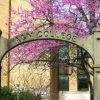

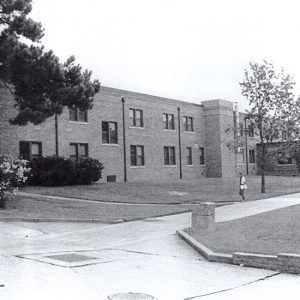
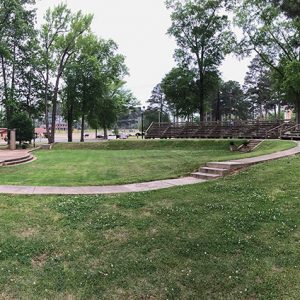
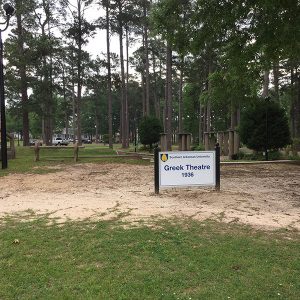
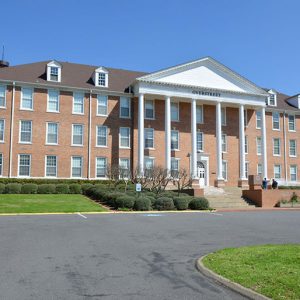
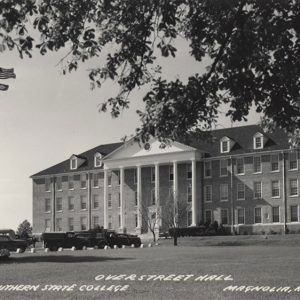
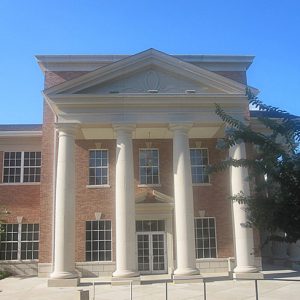
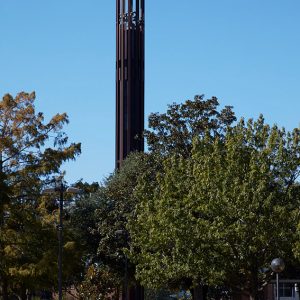
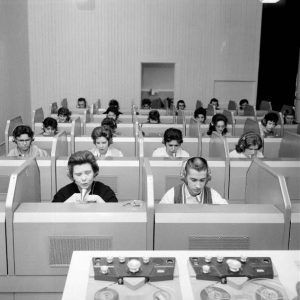




I am proud to be a graduate of this university. This gave me many years of excellent employment, here in South Arkansas. Plus I am experiencing a good retirement.